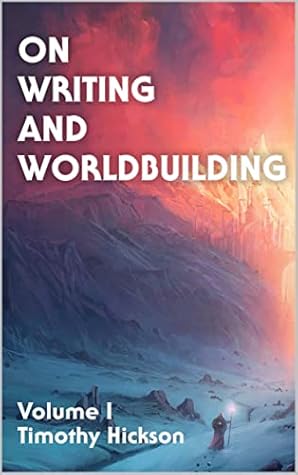More on this book
Community
Kindle Notes & Highlights
an author owes no obligation in their work other than to write the story they wish to read.
PART I PROLOGUES
A prologue is a segment that takes place before the first chapter, and the defining feature of a prologue is its distance from the main narrative.
The point of view: it is told from the perspective of a different character to the main story, like in The Way of Kings by Brandon Sanderson.
Time: it takes place significantly after or before the main narrative, like the first part in Harry Potter and the Philosopher’s Stone, which takes place ten years prior.
Geography: it takes place in a vastly different setting to the majority of the narrative, like in the 2018 Netflix series Altered Carbon.
Hooks
Having a prologue as well as a first chapter usually means you have two hooks at the beginning of your book.
When using this double-hook structure, it’s important to have each hook target two different questions in the narrative.
Ensure your prologue targets a different question to that of the first chapter.
The prologue-hook should be something that cannot be effectively communicated early in the main narrative because the main characters cannot know about it but is still crucial to the development of the tension in the narrative.
Necessity
But most of the time, backstory is better given as a flashback later in the story, because that event in their past does not help the reader understand the beginning of the novel.
What makes a prologue necessary is that it introduces an element fundamental to understanding the novel from that point forward in a far more impactful way than exposition would.
Things relevant far later in the story can be left for the main narrative.[2]
Exposition
Mystery
At the same time, it functionally communicates the following pieces of exposition: Lily and James are dead and their son survived. The Dark Lord has been defeated and the boy was somehow involved. There is a world of wizards hiding from non-magical people, called ‘muggles’. These wizards wear strange clothes and have been fighting a war for years.
“They're saying he tried to kill the Potters’ son, Harry. But—he couldn't. He couldn't kill that little boy. No one knows why, or how, but they're saying that when he couldn't kill Harry Potter, Voldemort's power somehow broke—and that's why he's gone.”
Emotionalism
Martin communicates a lot of exposition about how the powers of skin-changers work: It can drive them mad being stuck in an animal’s body for too long. Skin-changers often lose their humanity after changing so often. It is possible to become too weak to jump into another’s mind. Those strong enough can cast you out.
Unique tone, mood, or theme
James S.A. Corey uses his prologue in Leviathan Wakes to distinguish his science fiction novel as this mystery-Lovecraftian-horror story, something uncommon in mainstream science fiction:
Focus on language and description that highlights that unique feature of your story—metaphors critical to development of a theme, dialogue supporting the tone, or descriptive pieces establishing mood.
Length
An exercise in bad prologues: Eragon by Christopher Paolini
Does the book have two distinct hooks?
The prologue-hook leaves us with the question: ‘What is this magical sapphire stone?’ The question arising in the first chapter is then: ‘What is this magical sapphire stone?’
Is it necessary?
He dreams of Arya, but he does not know who she is. The reader, however, is not the least bit surprised that the mysterious dark-haired elf girl he dreams of is the mysterious dark-haired elf girl in the prologue.
How does it deliver its exposition?
To give Paolini a point here, his prologue is not an exposition dump,
Does it communicate a unique tone, mood, or theme?
Given the genre-defining role that stories like The Lord of the Rings played in fantasy, readers still have an assumption that fantasy stories will be like this unless told otherwise.
Summary
Firstly, have hooks that target two different points of tension in the narrative in the prologue and first chapter.
Secondly, a prologue must be necessary.
Thirdly, avoid prologues that are exposition dumps.
Fourthly, prologues can be used to communicate a unique tone, mood, or theme that cannot be effectively established in the first chapter.
Ultimately, do not include a prologue unless it is necessary and you can do it well.
PART II THE FIRST CHAPTER
The mini-three-act-structure
The introduction of a problem. The exploration of that problem. The resolution of the problem.
The reason the mini-three-act structure works so well is because it does more than create an interesting conflict for the writer to explore in their first chapter—it allows you to show what kind of conflict the reader can expect in the story. It allows you to show how the main character thinks and deals with conflict, making them seem proactive, rather than passive, from the beginning.
Crucially, the mini-three-act-structure also allows you to introduce how characters approach problems:
Alternatively, many authors use the opening chapter problem as the inciting incident—the thing that really launches your main character into the story—and that is perfectly fine.
the resolution part of the three-act-structure doesn’t need to mean the protagonist solves the problem. It could end in disaster, like in The Way of Kings by Brandon Sanderson, or it could simply be that the main character resolves to fix this problem, and so begins their quest.
Opening lines
“It was a bright cold day in April, and the clocks were striking thirteen.”
“It was a dark, blustery afternoon in spring, and the city of London was chasing a small mining town across the dried-out bed of the old North Sea.”


